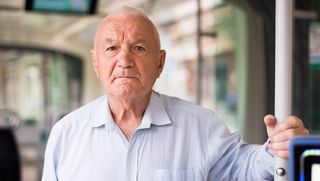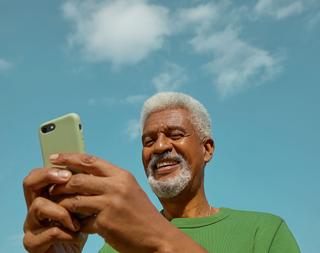Why low vision is often invisible - and what to do about it
Sometimes, low vision may not always be obvious.


Summary
Vision loss doesn’t always look the way people expect. For many Australians, it begins gradually - signs become harder to read, glare on footpaths feels disorienting, or the edge of a curb appears less defined than it once was. These changes might not mean blindness, but they can still profoundly affect daily life.
The challenge isn’t just the vision itself - it’s how invisible that experience can be to others.
On a train recently, a man in his 60s misjudged his platform and nearly stepped off before it was safe to do so. He lives with macular degeneration, and his depth perception has changed significantly. No one stopped him. No one realised he needed help. “If they’d known,” he said, “maybe someone would’ve said something.”
Stories like his are not unusual. Across the country, people with low vision are quietly navigating a world that often isn’t designed to notice. Some choose to disclose their condition. Others don’t. For some, the idea of identifying themselves in public feels like giving something up.
Margaret, 74, has glaucoma and lives alone on the coast. She was offered a badge that reads “I have low vision” - something she could wear when out and about, to help others understand she might need a bit more time or assistance. She politely declined. “I’ve always been independent,” she said. “I don’t want people treating me differently before I even speak.”
She recalled standing in the post office, trying to fill out a form she couldn’t quite see. The man behind her sighed loudly. “I thought about saying something,” she said. “But I didn’t want that to be the first thing people noticed about me.” For Margaret, maintaining privacy is part of maintaining control. “I might use the badge one day,” she said, “but I want it to be my call.”
For others, a small sign of visibility offers relief. Ellen, 68, was recently in hospital for a routine day procedure. Throughout her visit, she found herself quietly struggling - reading a touchscreen form, navigating signage, understanding the meal menu. She doesn’t use a cane and doesn’t consider herself disabled, so most staff had no idea she needed support. “I was already anxious,” she said. “I didn’t want to keep saying, ‘Sorry, I can’t see that.’”
Afterwards, she said a small card - something official but discreet would have taken the pressure off. “Just something to show that explains it in a nutshell,” she said. “It would have helped a lot.”
“Accessibility is a shared responsibility. It should be a standard, not a special favour. The onus should be on everyone to consider accessibility."
These stories reflect the underlying truth: there’s no right or wrong way to live with low vision. Some people want to advocate for themselves openly. Others prefer discretion. What matters is that people are given the choice and the tools to feel safe, supported, and in control.
Your free 'I have low vision card' can be printed and folded in half, or saved as an image on your device for use whenever suits you. Download your free card using the button below.
Your lived experience with vision changes might be exactly what someone else needs to hear. Whether it's a tip, a story or something you've experienced or learnt along the way, if you'd like to share, we'd love to listen. Write or call us at:
Did you find this article helpful?
Share your thoughts and help us make our resources better for everyone.
Enjoying the content?
Start building your profile to access personalised support, resources, and tools tailored to your eye health journey.
